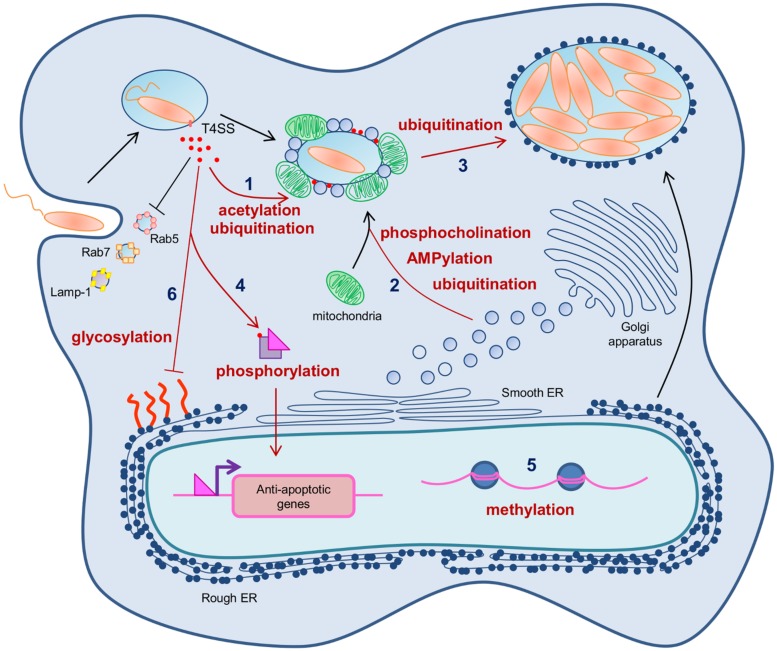FIGURE 2.
Post-translational modifications controlling various infectious cycle steps of Legionella pneumophila. Immediatly after uptake of the bacteria, L. pneumophila secretes a high number of Dot/Icm effectors into the host cell cytosol. (1) L. pneumophila exploits the host prenylation apparatus to alkylate some of these effectors and target them to the LCV surface. The effector LubX is able to ubiquitinate some effectors thus addressing them to proteasomal degradation and controlling their temporal presence on the LCV during infection. (2) Four Dot/Icm effectors reversibly AMPylate and phosphocholinate the host Rab1 small GTPase, thus controlling its activity to promote ER recruitment on the LCV, a prerequisite feature to make the phagosome a replicative niche. SidC and its paralog SdcA monoubiquitinate Rab1 and catalyze polyubiquitin chains formation necessary for ER recruitment on the LCV. (3) The Dot/Icm effector AnkB functions as a platform for the docking of polyubiquitinated proteins to the LCV membrane, thus promoting proteasome-mediated generation of free amino acids essential as energy and carbon sources for L. pneumophila intracellular proliferation. (4) The Dot/Icm effector LegK1 phosphorylates IκB thus mimicking the host IKKs, and triggering the activation of the NF-κB pathway and the transcription of NF-κB dependent genes. (5) The Dot/Icm effector LegAS4/RomA trigger the methylation of the histone H3, thus inducing epigenetic changes and subsequent transcriptional control of host genes. (6) Several Dot/Icm effectors exhibits glycosidase activity toward eEF1A, thus inhibiting the host cell translation.

